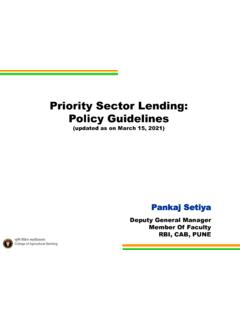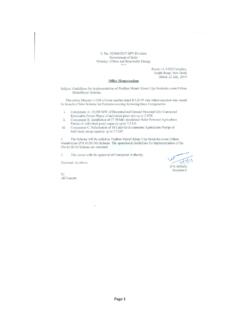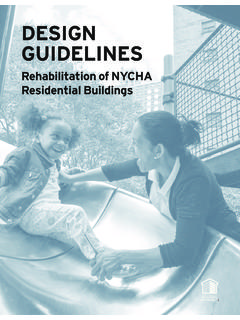Transcription of Homeowners Association Architectural Guidelines
1 Homeowners Association Architectural Guidelines A Supplement to Towne Meadows HOA Rules & Regulations Revisions Approved and Resolved June 21, 2004. Architectural Guidelines Revisions #02 Revised June 2004. Table of Contents 1 - INTRODUCTION .. 3. 2 - OVERVIEW .. 3. 3 - COMMUNITY 4. 4 - GENERAL 4. 5 - SITE 5. Building Envelope and 5. 5. Grading and 5. On-Site 5. Driveway 5. and 6. Recreational or Play 6. 6. Exterior Holiday 6. 6 - Architectural Design .. 6. 6. , Gate, and Exterior 7. 7. 7. 7 - Architectural 8. 8. 8. Solar 8. 8. Scuppers, Gutters, and 9. 8 - Landscape 9. Landscape 9. 9. Trees, Plants, and 9.
2 And Fences 10. Berming 10. Architectural Guidelines Revisions #02 Revised June 2004. Towne Meadows HOA. Architectural Guidelines Revised June 2004. 1. INTRODUCTION. This publication is intended as an informational resource guideline for Towne Meadows Homeowners Association . It is intended as a tool to assist in the understanding of the design review process and its corresponding requirements. The Guidelines pertain to visual and environmental goals, as well as the required procedures for design changes, remodeling, or construction within the Towne Meadows community. The minimum acceptable levels of planning, architecture, detailing, and landscape design are specified in the Association CC&R's and Rules and Regulations.
3 Successful implementation of these objectives will create a community of the highest quality and one of great distinction. 2. OVERVIEW. See Rules & Regulations Section 3. This document establishes Guidelines for members of the Association for the purpose of submitting Architectural change requests. This document also serves as a guideline for the Architectural Committee for the purpose of approving Architectural change requests. The design Guidelines supplement those areas of the CC&R's that do not provide specific criteria for building, improvements, alterations, repairs, excavation, landscaping or other work which, in any way, temporarily or permanently alters the exterior appearance of the property visible from the street.
4 These design Guidelines shall also be used when establishing rules and regulations or the enforcement of the CC&R's and are intended to be used in conjunction with the CC&R's and the Rules and Regulations for the Association . Architectural Guidelines Revisions #02 Revised June 2004. 3. COMMUNITY PLAN. See Rules & Regulations Section 5. The overall community plan has been created to afford housing opportunities. The unifying fabric of the community will be maintained through the layout of each home site previously determined by the project developer, as well as the placement of all community theme walls and amenities.
5 As stated in Article 2, Section (g) of the CC&R's: no building, improvements, repairs or other work or change that permanently alters the exterior appearance of any of the property are to be made without prior approval from the Board or Architectural Committee.. Architectural change requests forms are available on line at the Towne Meadows Association web site ( ) or from the management company and are required for submitting requests for any building, changes, alterations or repairs. 4. GENERAL CONSIDERATIONS. See Rules & Regulations Section 5, 6. The Committee reserves the right to disapprove any submittal or to mandate remedial action whenever the standards may be compromised.
6 The individuality of any ornamental feature should be basic to the permanent character and quality of each structure and its related landscape, rather than appearing as any form of unrelated accessory items. The integrity of these standards will enhance the overall community both initially and for the long term. All home improvement projects must obtain a building permit from the Town of Gilbert (when applicable) and be completed within 4 weeks from start of project unless the Board approves an exception upon request with reasonable justification. In the event a building permit is required, a licensed and bonded contractor must accomplish construction.
7 Architectural Guidelines Revisions #02 Revised June 2004. 5. SITE PLANNING. See Rules & Regulations Section 6. Building Envelope and Setbacks Each home site has a specific building envelope that is indicated on the building envelope exhibit available from the Planning and Zoning Department from the Town of Gilbert. Building envelope and setbacks are designed to protect and preserve the landscape features and view angles of each home site. Private Area The private area is that part of the building envelope which is not visible from neighboring property, because it is hidden behind walls or structures. The private area has no restrictions in terms of what plants, shrubs, and trees can be planted therein.
8 The private area includes, for example, a courtyard, or the area behind a site wall. Grading and Drainage Site grading and drainage must occur with minimum disruption to the home site, without altering natural drainage patterns as runoff leaves the home site, and without causing conditions that could lead to unnecessary soil erosion. This will be considered on a case-by- case basis, and an owner should not assume it would be allowed in all cases. Reasons for denial of moving drainage way include the possible loss of trees, the visual quality of the drainage way, or civil engineering that may show it not possible.
9 On the majority of the home sites, no natural drainage ways exist, and the drainage of the home site is all that is necessary. Surface drainage upon and across any home site must be addressed through the implementation of sound construction and grading practices. Any improvement, which creates an obstruction to surface flows resulting in, a back up of storm waters onto a neighboring home site or tract is strictly prohibited. On-Site Parking (See Rules & Regulations Section ). No RV's, campers, boats, trailers, etc. are allowed to be stored on the property without prior Board approval. Driveway Expansion (See Rules & Regulations Section ).
10 The Board has established that concrete additions to driveways cannot be wider that the standard width of a single driveway slab, or 9' (nine feet). Driveways cannot be wider than the equivalent of a triple car garage's driveway or 27' (twenty-seven feet). Patio or sidewalk concrete additions will be evaluated on a case-by-case basis, depending on the existing amount of concrete and the size or shape of the lot. Architectural Guidelines Revisions #02 Revised June 2004. Walls and Fencing (See Rules & Regulations Section ). The alteration of existing, or the addition of any walls must be made of a material that is compatible with the finish materials utilized on the house.







